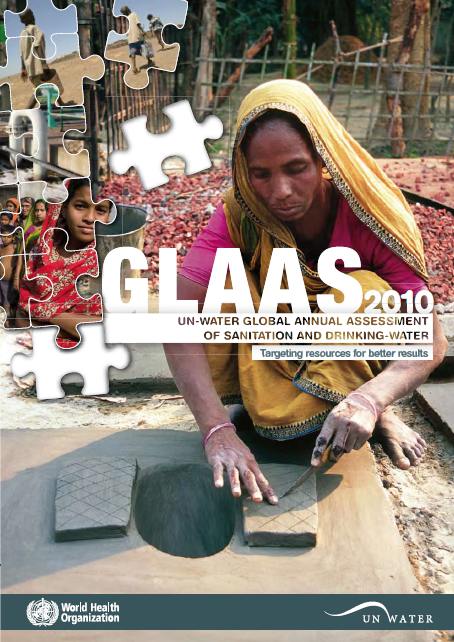New GLAAS report 2010 - UN-water global annual assessment of sanitation and drinking-water
WHO (2010)

Published in: 2010
Publisher:
World Health Organization (WHO), Geneva, Switzerland
Author:
WHO
Uploaded by:
SuSanA secretariat
Partner profile:
common upload
4007 Views
34 Downloads
Content - Summary
Increasing people’s access to sanitation and drinking-water brings large benefi ts to the development of individual countries through improvements in health outcomes and the economy. From recent World Health Organization (WHO) reports, we know that the impact of diarrhoeal disease on children is greater than the combined impact of human immunodefi ciency virus/acquired immunodefi ciency syndrome (HIV/AIDS), tuberculosis and malaria; we also know that the provision of improved sanitation and drinking-water could reduce diarrhoeal diseases by nearly 90%.
Latest estimates indicate that improvements in sanitation and drinking-water could reduce the number of children who die each year by 2.2 million. Huge savings in health-care costs and gains in productive days can therefore be realized by improving access to safe water and basic sanitation. As well, investing in sanitation and drinking-water brings very large economic returns—estimated by the World Bank to average approximately 2% of gross domestic product (GDP), rising to over 7% in some specifi c country contexts. However, the current status—as described in the recently published report by the WHO/UNICEF Joint Monitoring Programme for Water Supply and Sanitation (JMP)—of over 2.6 billion people not using improved sanitation and nearly 900 million people not using an improved source of drinkingwater is surely unacceptable.
Bibliographic information
WHO (2010). New GLAAS report 2010 - UN-water global annual assessment of sanitation and drinking-water. World Health Organization (WHO), Geneva, Switzerland
Filter tags
English















